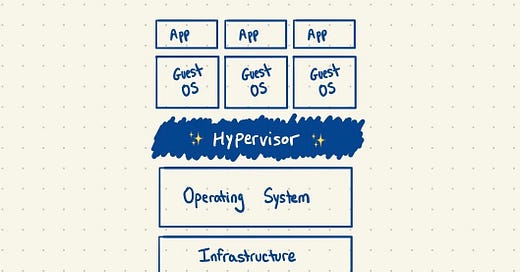The TL;DR
Containers are a way to run code in isolated boxes within an operating system; they help avoid disastrous failures and add some consistency to how you set up applications.
Special software called a hypervisor allows multiple isolated operating systems to run on one computer, and containers do the same for operating systems (🤯)
Containers also pr…
Keep reading with a 7-day free trial
Subscribe to Technically to keep reading this post and get 7 days of free access to the full post archives.




